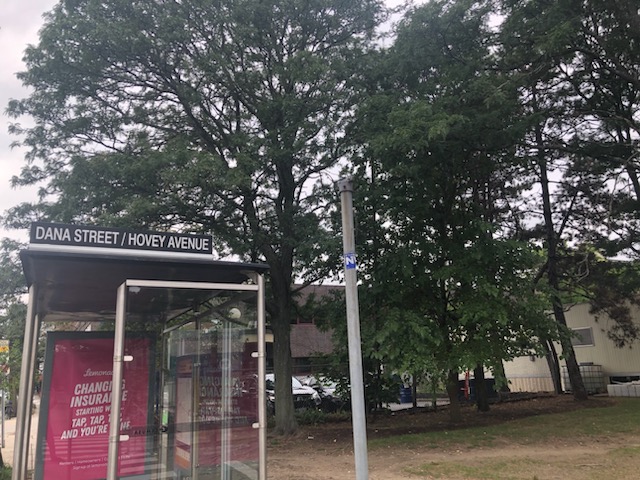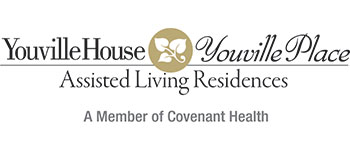The Spirit of Hovey
Summary
The land on which Youville House and Spaulding Hospital now stand was once home to Hovey Nurseries, the largest collection of trees in the United States in its time. The founder of Hovey Nurseries was a self-taught horticulturalist whose many accomplishments include cultivating the first American strawberry.
Above: a chromolithograph of Hovey’s successful strawberry cross, The Boston Pine Strawberry, from “Fruits of America.” Virtually every strawberry produced in New England today is a descendant of the Hovey Strawberry.
No motorist can access Youville House without becoming involved with Hovey Avenue, an unassuming side street that connects Cambridge Street to Magnolia Avenue and provides access to the Youville and Spaulding Hospital parking lots. Outside of the Youville sphere, even longtime Cantabrigians are likely to be unacquainted with Hovey’s existence. Even less likely is that they will know the history behind the street name.
Youville resident Astrid Dodds recently came across the name of Charles Mason Hovey while reading an oral history about a neighborhood dispute on Cambridge Street. As the story goes, controversy about the removal of an old tulip tree in 2000 revealed that it may have once belonged to a sprawling orchard called Hovey Nurseries.
“Before moving to Youville, I had never heard of Hovey despite living in Cambridge for 60 years,” says Astrid. “This inspired me to ask the Cambridge Historical Commission about him. As luck would have it, the CHC staff member who replied is even now doing more research on Hovey.”
Astrid found out that the land on which Youville House rests was once part of Hovey Nurseries, a 40-acre experimental tree paradise where the renowned horticulturalist Charles Mason Hovey grew tens of thousands of fruit trees and experimented with new plant hybrids. Today’s residential side streets were once paths that cut through the enormous orchard’s subdivisions of pear, apple, peach, nectarine, apricot, plum and cherry trees. Some of these street names hearken back to the land’s botanical lineage: modern-day Myrtle Street, Magnolia Avenue, Camelia Street, and Maple Street lie within the ancient orchard’s boundaries.
Charles Hovey purchased this 40-acre plot in 1840. He lived in a house on Broadway on the border of the nursery, where he also maintained four greenhouses devoted to his hybridization experiments. One of his specialties was camellias, and the Cambridge Chronicle noted on July 13, 1848, “the whole neighborhood is scented with their odor, and an array of smaller flowering plants beautifully arranged the greenhouses and outdoors.”
Perhaps the most consequential of Hovey’s hybrids was the Hovey Strawberry, the first successful cross that would result in a tasty, commercially viable American strawberry. Today, most strawberries grown in New England derive from the strain that Hovey created.
Hovey’s influence on gardening reached far beyond Cambridge. He published America’s first horticultural magazine, The American Gardener, from 1835-1868, and authored the influential book The Fruits of America (1848-1846). Hovey was also a successful businessman. With his brother Phineas, he founded and ran Hovey & Co, a “Horticultural Seed Store” that operated near Faneuil Hall.
According to Hovey & Co.’s Descriptive Catalogue of a Choice Collection of Flower Seeds (1845):
“Our nurseries are very extensive, embracing upwards of thirty acres of land, the whole of which will be devoted to Fruit and Ornamental Trees, Shrubs, Evergreens, Grape Vines, Herbaceous Plants, Dahlias, Bulbous Roots, Greenhouse Plants, &c., &c., Catalogues of which may be had on application.
The Nurseries are situated on the Cambridge road to Mount Auburn, half a mile east of Harvard Colleges, and about two miles from Boston. A large conservatory, and an extensive greenhouse, both with span roofs, have been erected, which are filled with choice collections of Camellias, Roses, Pelargoniums, Ericas, Azaleas, and miscellaneous plants. All amateurs and lovers of plants are invited to visit the Nurseries.”

Modern day Hovey Avenue at the Cambridge Street intersection
Hovey died in 1887 and the nursery soon passed out of the family (his son had moved to California to pursue his own horticultural career). Over the years, subsequent owners sold it off, plot by plot, for residential development and later for the establishment of the Holy Ghost Hospital for the Incurables, spearheaded by the Sisters of Charity of Montreal. Today, we can only imagine the sights and scents of Hovey’s enormous orchards and greenhouses. The layout of today’s side streets preserves the orchard’s contours, and we can be assured that somewhere beneath our footsteps, buried in more than a century’s worth of sediment, an assortment of Victorian-era gardening tools is waiting to be unearthed by posterity.
Think about that next time you turn into the Youville House parking lot!
Further reading: National Gardening Day: Charles Mason Hovey – The Cambridge Historical Commission (wpcomstaging.com)
For more information about Youville House, please contact Yanira Burgos at 617.491.1234 or email yaniraburgos@youvillehouse.org.


